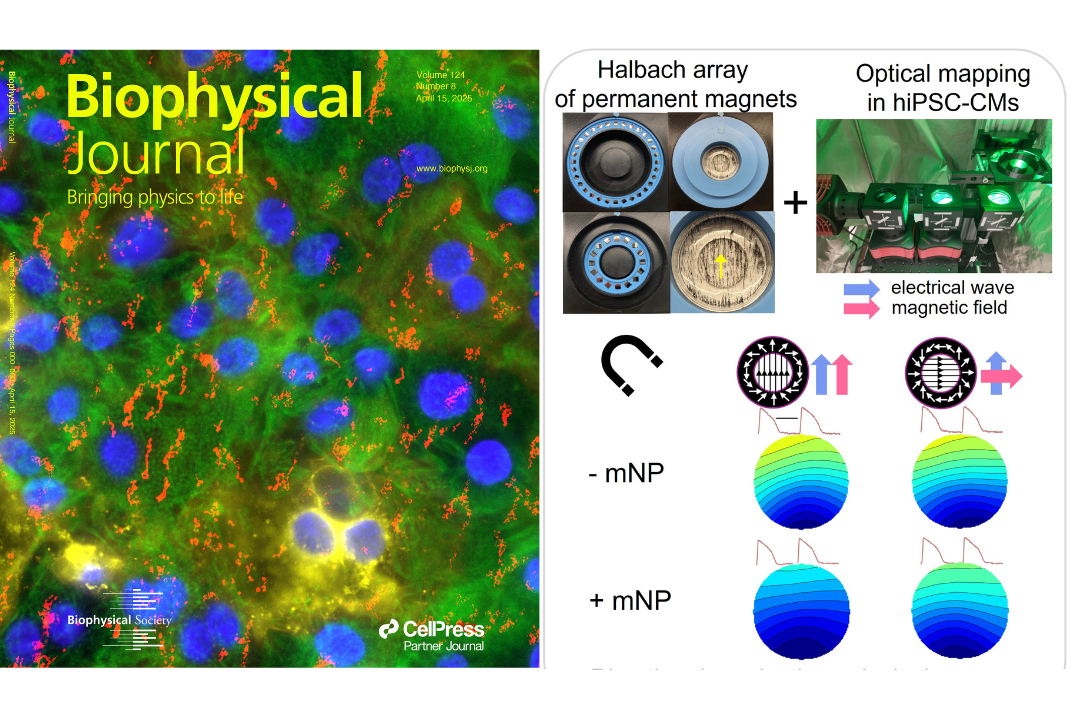PhD student Maria R. Pozo led a study entitled “Control of cardiac waves in human iPSC-CM syncytia by a Halbach array and magnetic nanoparticles,”which was recently published in Biophysical Journal. The GW Engineering team of researchers from the Department of Biomedical Engineering (BME) also included postdoc Dr. Yuli W. Heinson and Christianne J. Chua (BS/MS ‘21), former lab members in Professor Emilia Entcheva’s lab.
This study is the first to demonstrate the use of relatively low-strength magnetic fields, aided by mNPs, as a means for modulating cardiac electromechanical waves. To do so, the researchers built a Halbach array, a compact arrangement of permanent magnets, originally developed to focus particle-accelerator beams and recently also used in the brushless motors of electric vehicles. This allowed the generation of well-defined uniform magnetic fields of about 45mT. The group’s in-house built optical mapping system was used to image the electromechanical waves in human stem-cell-derived heart cells, incubated with mNPs, while the magnetic field was imposed along or perpendicular to the waves.
Here is an excerpt from the significance statement of the manuscript: “We report that constant magnetic fields of modest strength (<50 mT) generated by a compact Halbach array can be used to modulate the conduction velocity of electromechanical waves in engineered human heart cell networks after a short-term incubation with magnetic nanoparticles (mNPs). An approximately 25% increase in wave speed was seen when the magnetic field and the excitation waves were co-aligned. With dynamic control of the magnetic field strength and the magnetic force and with optimized mNP design, this approach may be useful in arrhythmia control as well as in accelerating the integration of mNP-modified engineered cardiac tissue for heart regeneration.”
Read the full study in Biophysical Journal.
The research was featured prominently on the cover of Biophysical Journal’s April 15 issue, as well as a blog post on the journal’s website entitled “Using Magnetic Fields and Magnetic Nanoparticles to Influence Cardiac Waves of Excitation.”


